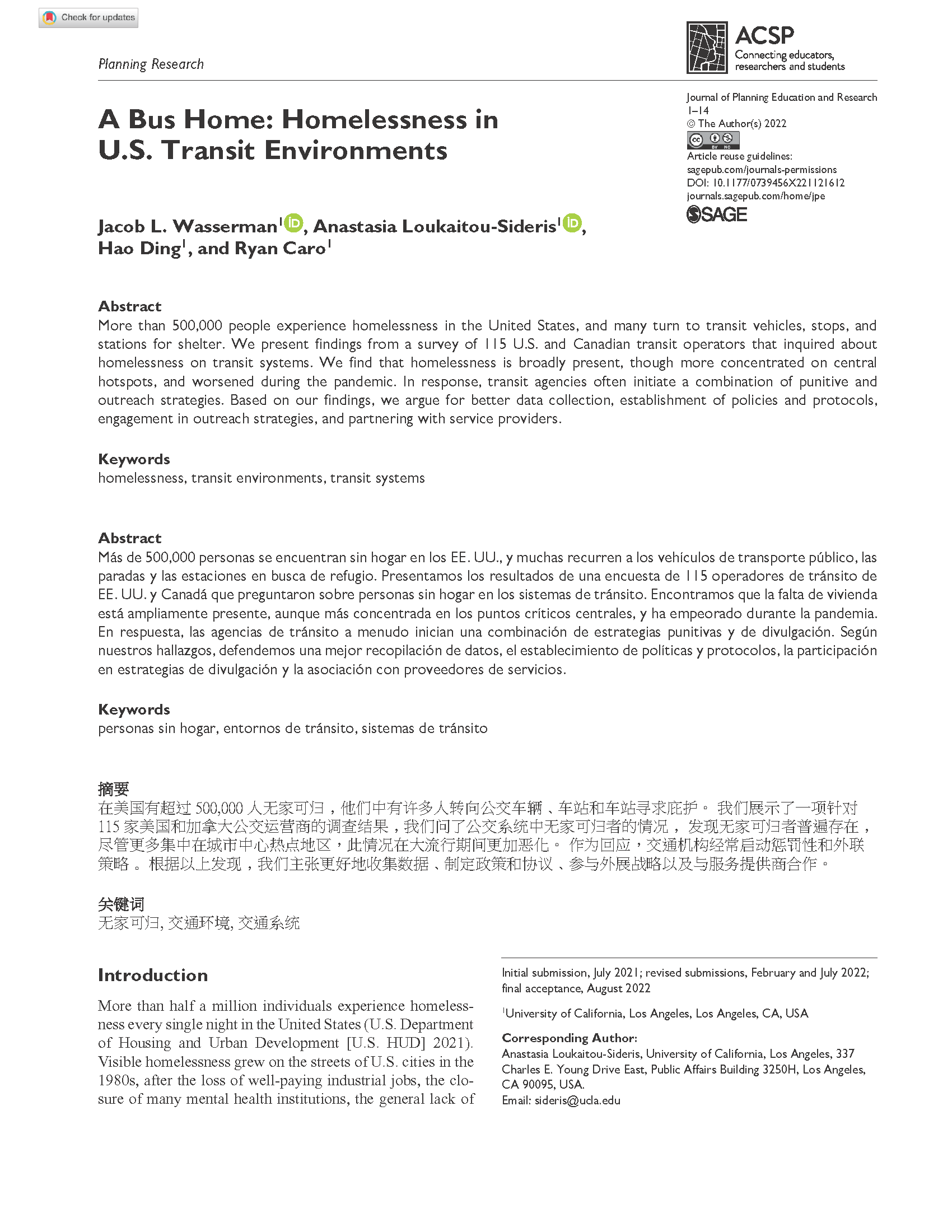Date: September 6, 2022
Author(s): Jacob L. Wasserman, Anastasia Loukaitou-Sideris, Hao Ding, Ryan Caro
Abstract
More than 500,000 people experience homelessness in the United States, and many turn to transit vehicles, stops, and stations for shelter. We present findings from a survey of 115 U.S. and Canadian transit operators that inquired about homelessness on transit systems. We find that homelessness is broadly present, though more concentrated on central hotspots, and worsened during the pandemic. In response, transit agencies often initiate a combination of punitive and outreach strategies. Based on our findings, we argue for better data collection, establishment of policies and protocols, engagement in outreach strategies, and partnering with service providers.
About the Project
More than half a million individuals experience homelessness every night in the U.S. With the scale of the crisis often surpassing the capacities of existing safety nets — all the more so since the onset of the COVID-19 pandemic — many turn to transit vehicles, stops, and stations for shelter. Many also use transit to reach destinations such as workplaces, shelters, and community service centers. This project investigates the intersections of the pandemic, transit, and homelessness; the scale of homelessness on transit; and how transit agencies are responding to the problem. All told, centering the mobility and wellbeing of unhoused riders fits within transit’s social service role and is important to improving outcomes for them and for all riders.


